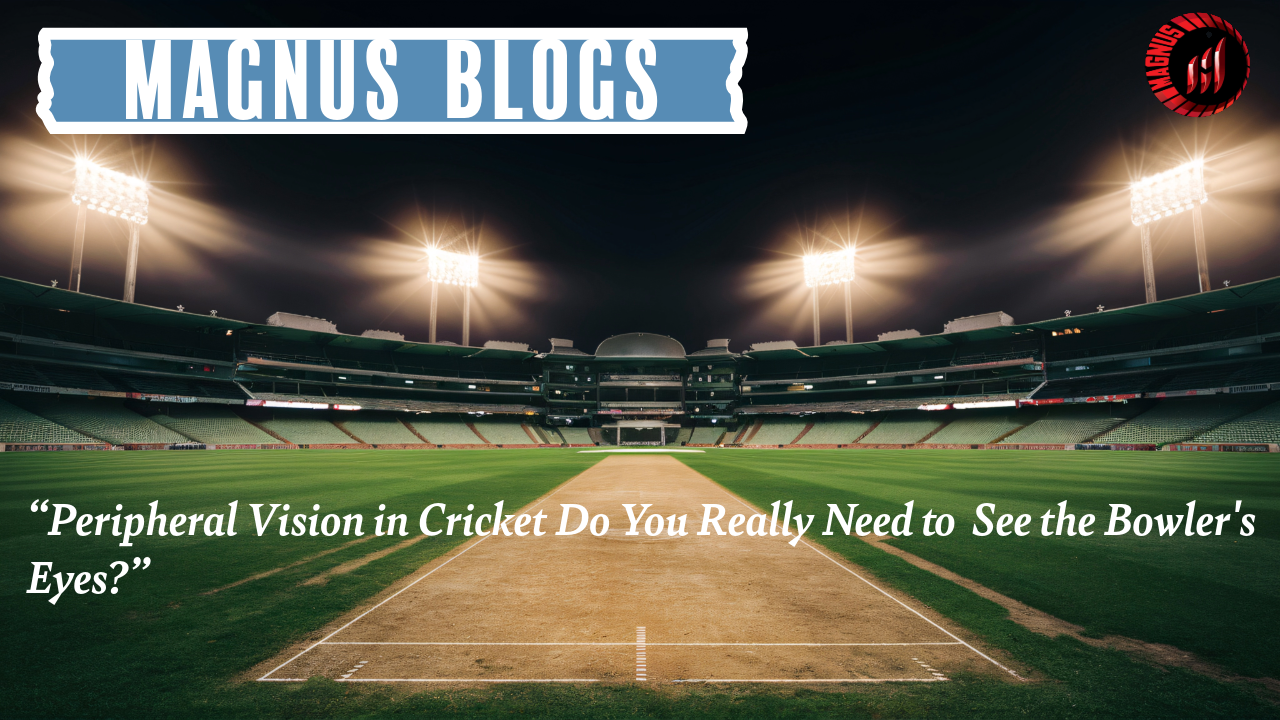Cricket is often described as a game of milliseconds — where reactions, decisions, and instinct determine success. Among the visual tools at a batter’s disposal, peripheral vision is one of the least discussed, yet most critical.
But here’s a question that splits even seasoned players: Does watching the bowler’s eyes give you an edge? Or are you better off relying on a broader field of visual awareness?
In this blog, we explore how peripheral vision works in cricket, whether looking at the bowler’s eyes has any real impact, and how elite players use their visual field to prepare for the unexpected.
What Is Peripheral Vision?
Peripheral vision refers to what you can see outside the direct line of sight — your side or ambient view. In cricket, peripheral vision helps players:
-
Track fielders while focusing on the ball
-
Spot subtle movement from the bowler’s body
-
Detect motion changes without needing to look directly at the object
While your central vision is focused, your peripheral vision is where motion detection, timing sensitivity, and reflex triggers live.
The Myth of the Bowler’s Eyes
Some batters claim they can read a bowler’s intention — aggression, hesitation, or confidence — by looking at their eyes. While this might work in a psychological context, scientifically, there’s little proof that eye contact offers measurable tactical advantage in cricket.
Here’s why:
-
The ball is released from the hand, not the eyes
-
The eyes are often too distant or obscured to read reliably
-
Eye contact might distract a batter from more useful cues (arm speed, shoulder rotation, grip)
Instead, elite batters often keep their focus at shoulder or chest level during the run-up to prepare for the release.
Where Should You Actually Look?
Research and elite coaching agree that the most effective visual strategy for a batter involves:
-
Watching the bowler’s approach and rhythm using peripheral awareness
-
Focusing on the release hand and seam position just before delivery
-
Letting the eyes naturally track the ball from hand to pitch
By using a soft, wide gaze during the run-up (rather than tight focus on one point), the batter can gather kinetic clues — changes in stride length, drop in shoulder, slower arm speed — which are far more valuable than facial expressions.
The Role of Peripheral Vision in Shot Preparation
Peripheral vision helps with:
-
Reading field placement: You don’t always have time to check all fielders. Peripheral cues help you decide whether to loft, drive, or leave.
-
Reacting to unexpected movement: A slight change in bowler’s stride or angle can be noticed peripherally before your central vision engages.
-
Maintaining spatial balance: Helps keep track of your foot placement relative to the crease or stumps during movement-heavy formats like T20.
Can You Train Peripheral Vision?
Yes — and cricketers at the highest level do it regularly. Some drills include:
-
Soft focus drills: Watching the bowler with an unfocused gaze to increase motion sensitivity.
-
Multi-ball drills: Requiring players to respond to stimuli in their side vision while batting.
-
Reaction boards and light grids: Used in high-performance centers to train spatial alertness.
These drills condition the brain to process side-view information faster, which is especially important in tight T20 games.
Mental Edge: Awareness vs. Distraction
While seeing the bowler’s eyes might feel like a psychological advantage — especially in sledging-heavy matches — it can also become a distraction. Focusing too much on facial cues can:
-
Increase tension
-
Narrow your visual field
-
Reduce ability to track the ball fluidly
Instead, maintaining calm, expansive awareness is proven to lead to better reaction time and bat control.
So, do you need to see the bowler’s eyes to succeed in cricket? Not really. The eyes don’t deliver the ball — the body does.
In fact, your real superpower lies in your peripheral vision — the ability to scan, process, and react to movement you’re not directly focused on.
Next time you face a bowler, try this: soften your gaze, widen your awareness, and trust your instincts. Your best cricket might begin where your eyes aren’t directly looking.
Cricket bat types, Cricket equipment in usa, Cricket equipment store, Cricket gloves, Cricket helmet, Cricket kit bags, Cricket retailers, Durable cricket gloves, English willow bats, Icc approved helmets., Kashmir willow cricket bat, Latest kashmir willow bat
